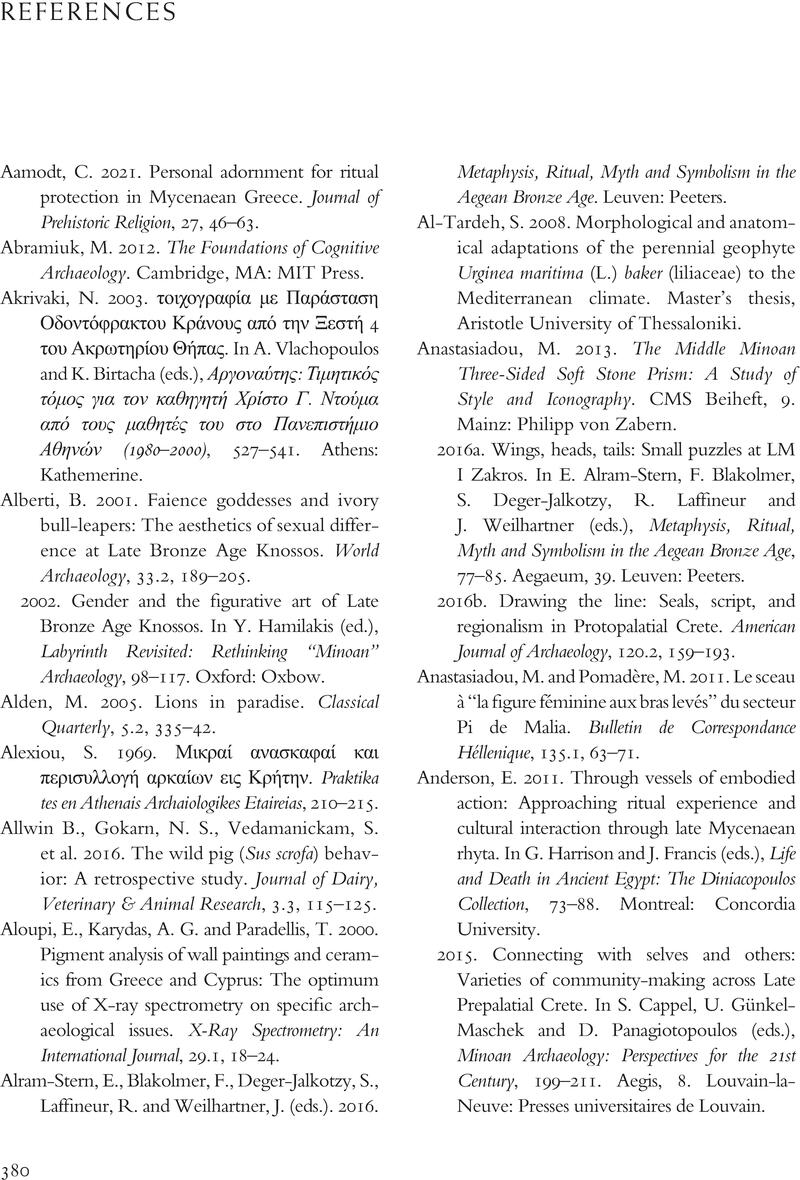Book contents
- Minoan Zoomorphic Culture
- Minoan Zoomorphic Culture
- Copyright page
- Dedication
- Contents
- Acknowledgments
- Chronology
- One Life among the Animalian in Bronze Age Crete and the Southern Aegean
- Two Craftiness and Productivity in Bodily Things
- Three Stone Poets
- Four Likeness and Integration among Extraordinary Creatures
- Five Singular, Seriated, Similar
- Six Moving toward Life
- Concluding Thoughts
- References
- Index
- References
References
Published online by Cambridge University Press: 17 May 2024
- Minoan Zoomorphic Culture
- Minoan Zoomorphic Culture
- Copyright page
- Dedication
- Contents
- Acknowledgments
- Chronology
- One Life among the Animalian in Bronze Age Crete and the Southern Aegean
- Two Craftiness and Productivity in Bodily Things
- Three Stone Poets
- Four Likeness and Integration among Extraordinary Creatures
- Five Singular, Seriated, Similar
- Six Moving toward Life
- Concluding Thoughts
- References
- Index
- References
Summary

- Type
- Chapter
- Information
- Minoan Zoomorphic CultureBetween Bodies and Things, pp. 380 - 407Publisher: Cambridge University PressPrint publication year: 2024

